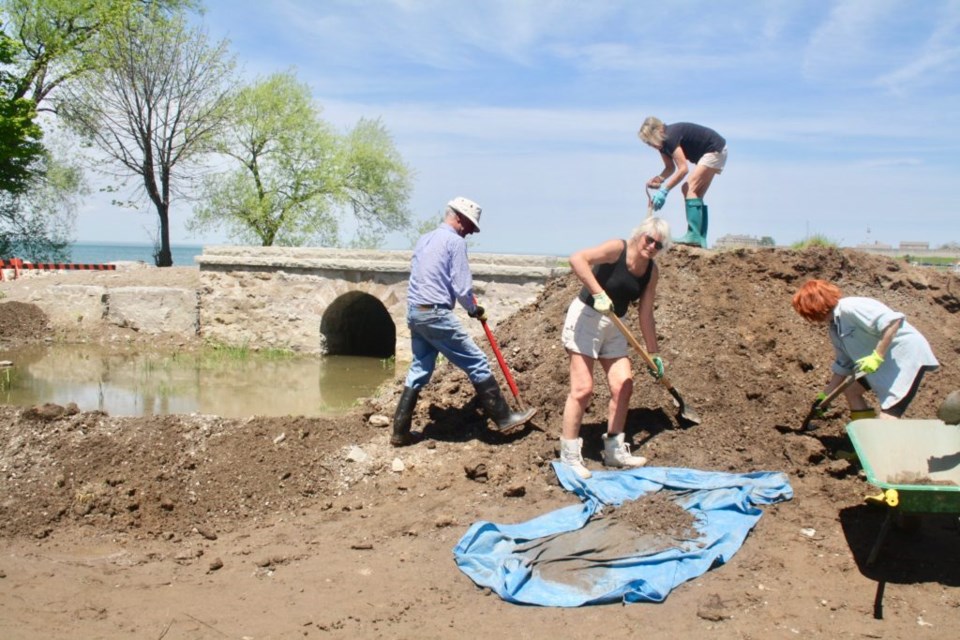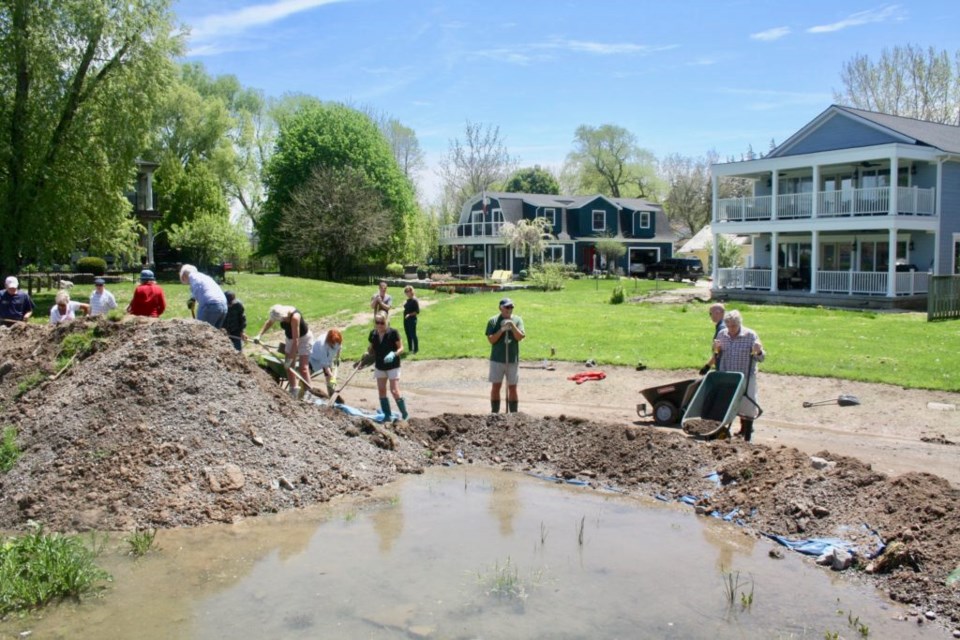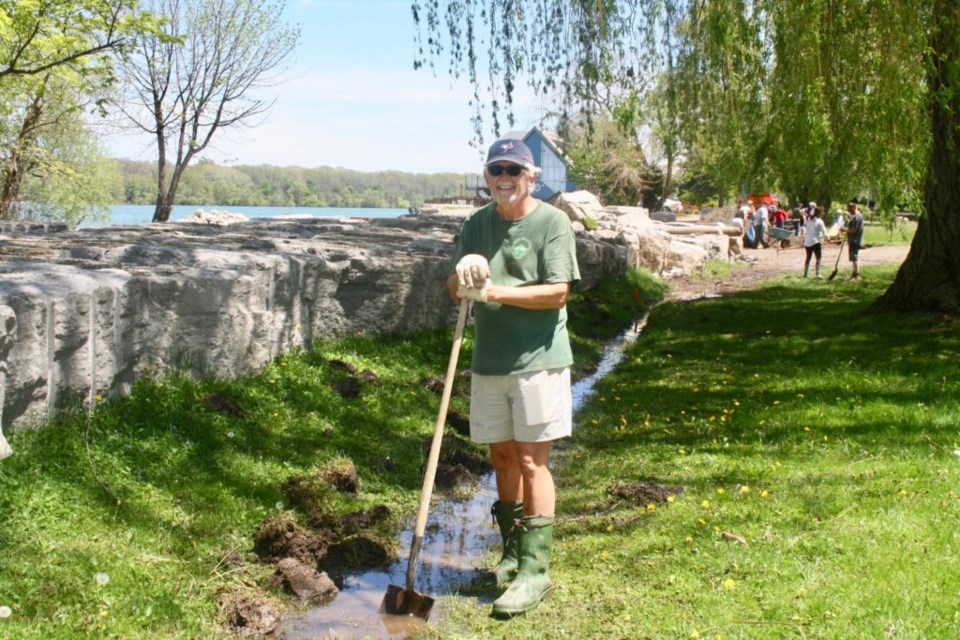
Dock Area residents decided to get a jump on flooding protection this weekend, creating a berm around a pond of water threatening to overload a ditch along the waterfront.
Lake water has pooled on the land as a result of the historic stone railway culvert at the west end of River Beach Drive. The ditch where it was collecting leads to one of the pumps the Town has installed, explained retired mining engineer Ron Simkus, and would keep the pump going steadily, pumping lake water back into the lake.
“We’re trying to stop that from happening,” he said. “What we’re doing now is saving the pump. The Town will finish it with some equipment that will fit into this location.”
Neighbours pitched in to help Saturday, and were back at it Sunday, placing a berm of soil and gravel about two feet high around the pool.
Town environmental supervisor Brett Ruck has been trying to arrange for a contractor to finish the work along the shoreline, Simkus said, and would be bringing in some large equipment to complete it, but the residents were doing what they could over the weekend to get the job started.
The part of the project that is unfinished includes moving a pile of large rocks — anchors, explained Simkus — and cobbles along the beach to protect the shoreline from further erosion and slow the movement of waves.
“The water will still get over the rocks, but when it goes back it won’t draw as much soil with it on its way. There is a lot more work to be done. And the contractors are all busy at this time of year. But Brett is working with one of the best and most efficient to get it done as quickly as possible.”
The work that was done to reinforce the waterfront path to allow for heavy equipment will have to be redone, he said. “The way it is now you can’t use it. They will be putting in the reinforcement as they should have done in the first place.”
Simkus said Town staff are dealing with issues they were not expected to handle, and weren’t prepared for.
However, he added, “this town is populated with people who have dealt with problems like this, people who have the knowledge and experience to help.”
Simkus, who has been sharing his expertise and research with the Town, said during his mining career, “I’ve dealt with issues much bigger.”
He praised Ruck for the work he is doing to manage a challenging situation.
“People here are concerned about what could happen. My answer is I don’t know. But Brett is doing the modelling necessary to find out the impact of the water rising to various levels, and once that’s done, he can work out the strategies to deal with it.”
While neighbours piled dirt around the pool with their shovels, wheelbarrows and tarps being used to drag the soil and gravel, Simkus was digging to deepen the narrow trench, to keep it from overflowing the stretch of waterfront and reaching the houses not far from it.
The home of senior Lois Cranston in particular was badly damaged in 2017, and they would be placing sandbags along the front of her house as an extra layer of safety, he said.
The threat, he added, was not just to the immediate homes of the Dock Area, but stretched along to the Nelson Street Park, which was already under water, the Kings Point condominiums, the Niagara Pumphouse Arts Centre and a private home beside it on Ricardo Street.
Sandbags were being placed at the front of the home, and the large white metre bags, filled with rock, were being moved in to protect the pumphouse, said Simkus.
He refers to the recent news of bacteria in the storm water sewer system, and says the issues of rising water levels, storm water outlets to the lake and cross-contamination between storm and sanitary sewers are related.
“If the sewers become overwhelmed, then the only thing we can do is shut off the water. The sewers have to be protected more than anything else.”

